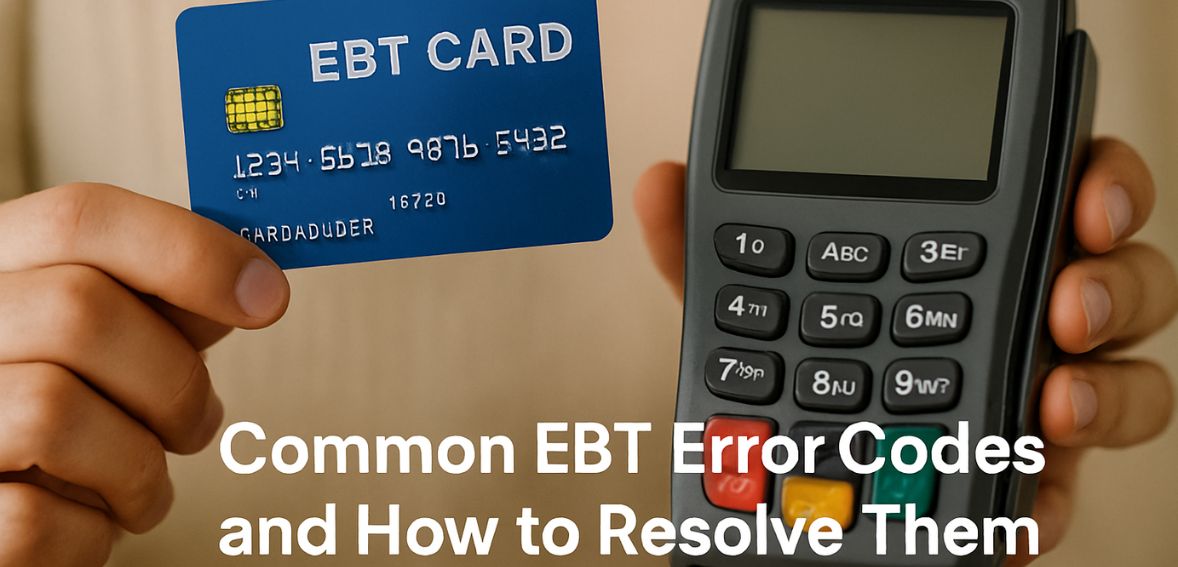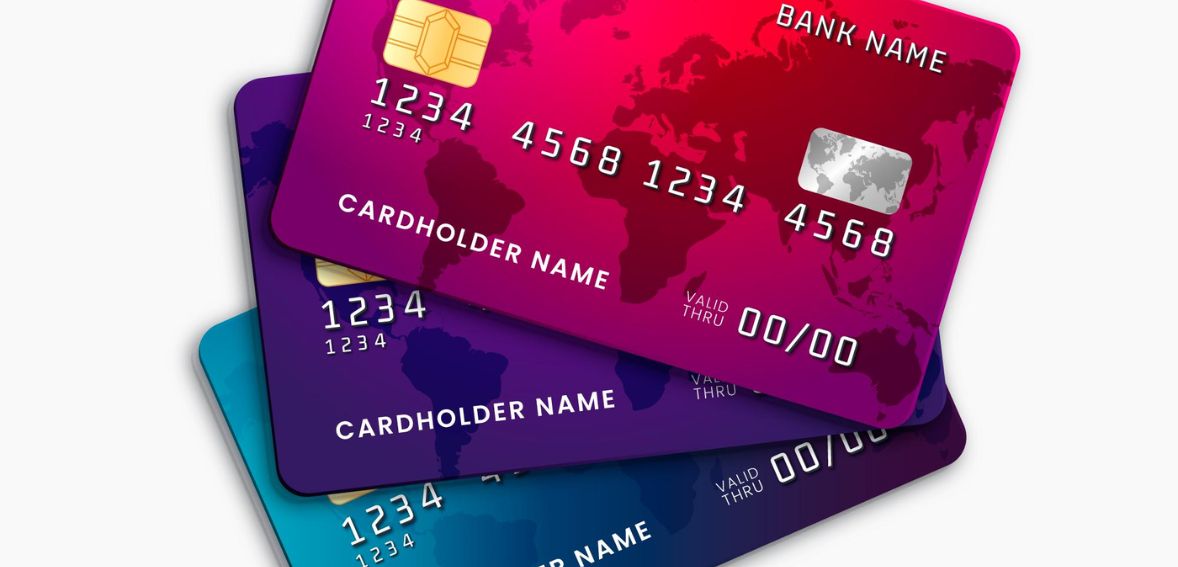
By Jackson Reed August 7, 2025
When an Electronic Benefit Transfer (EBT) transaction fails at checkout, it isn’t just a line delay—it’s a potentially serious breakdown impacting dignity, trust, and service. Understanding EBT error codes—and knowing how to interpret and fix them—can quickly resolve a frustrating situation, whether you’re accepting cash or SNAP benefits.
Why EBT Codes Matter More Than You Think

Each EBT error code represents a deeper system interaction between the terminal protocol, network authorization, eligibility records, and card data. Repeating transaction failures, embarrassment at the register, or denied benefits can result from misinterpreting or disregarding these codes. Long wait times can undermine customer confidence in retail settings.
Regular rejections can undermine trust in the system for the organizations that provide benefits. Knowing these codes enables program administrators, cashiers, and clerks to offer prompt assistance and ensure that recipients receive the benefits to which they are entitled.
Decoding Common Error Codes
A 2025 guide from Ultimate Systems highlights critical EBT error codes, rated by urgency and typical resolution steps :
- 57 – Transaction Not Permitted (Medium): Occurs when the card type or transaction type is disallowed. Verify whether the card is eligible for that type (SNAP vs cash) or if category restrictions apply.
- 61 – Exceeds Withdrawal Limit (Medium): The attempted amount is higher than the current benefit balance allows. Try a smaller amount or prompt the customer to check their balance.
- 75 – PIN Tries Exceeded (High): The cardholder entered their PIN incorrectly four times. Their account is locked until midnight. Advise the customer to wait until the next day or call the EBT support line.
- 91 – Issuer or Switch Inoperative (High): The authorization network isn’t responding. The best immediate move is a retry later or a direct support call.
- 96 – System Malfunction (High): This signals a terminal or network error. Restarting the POS or contacting support is required.
- 51 – Insufficient Funds (Medium): The cardholder doesn’t have enough balance for the purchase. They should verify their benefit balance or reduce the amount being requested.
- 14 – Invalid Card Number (Medium): Indicates issues with the card data, possibly caused by a damaged mag stripe or chip. Have the customer re-swipe or try another terminal, or contact EBT support if it persists.
- 94 – Duplicate Transaction (Low): Detects that the same transaction has already been processed. Refrain from reattempting immediately to avoid duplicate charges.
Across many state-run systems, including Conduent EBT terminals, these error codes appear and are explained—alongside troubleshooting steps—for team use and customer support .
The Role of Terminal Configuration: Sometimes It’s Not the Card

All too frequently, the cardholder is suspected when an EBT transaction fails. However, the configuration of the point-of-sale terminal is frequently the source of the issue. Valid transactions may be rejected by the merchant’s terminal if it does not support both SNAP and cash benefits or if the terminal ID has not been correctly registered with the state processor. These kinds of problems can be very annoying, particularly if the client is positive that they are eligible for benefits.
Outdated firmware or software can also cause terminal-side issues. Some EBT networks release updates regularly to guarantee adherence to encryption protocols, particularly by USDA FNS regulations. Random declines across otherwise functional cards could result from an update failure.
Additionally, merchants need to test their PIN pads and receipt printers regularly . The system may unnecessarily issue a Code 75 or 14 if a customer enters the correct PIN ,but the pad does not register it correctly. A whole class of avoidable declines can be eliminated with routine updates and simple device checks.
Payment Processors and EBT Gateways: Behind-the-Scenes Complexity

Many merchants, particularly small businesses, accept EBT through third-party processors that serve as a conduit between their point-of-sale system and the state’s EBT host system. These gateways are in charge of making sure that transactions are accurately routed, converted into formats that comply with state laws, and tracked in real time.
A Code 91 (switch inoperative) or even more general malfunctions like Code 96 may occur when something breaks at this level, like a delay in the authorization server handshake. The clerk and end-user frequently aren’t aware of these mistakes.
However, they have a significant effect: the store as a whole may momentarily lose its ability to accept EBT. These gateway outages frequently affect several companies in a region simultaneously. The important takeaway? These issues usually aren’t your fault. If a rash of EBT errors suddenly appears across otherwise reliable cards and equipment, a call to the processor—not just a device reboot—may reveal the larger outage.
Merchants who use EBT aggregators such as Conduent or goEBT can typically check online portals for status updates or request proactive outage alerts. Maintaining contact with your payment partner facilitates informing clients when an issue arises and when it will be resolved.
Error Codes and Customer Emotions: The Human Side of Declines
The emotional toll that EBT error codes can have is among their least talked-about features. In addition to confusion, parents frequently experience anxiety, shame, or even fear of being judged when they attempt to check out groceries and receive a generic decline or code they don’t understand. The emotional tone of how declines are handled is greatly influenced by clerks, cashiers, and even store managers.
Imagine standing in line with a cart full of food for your family, and suddenly the transaction fails. The person behind you sighs. The clerk looks annoyed. You’re told vaguely to “call the number on the back.” If that cardholder has experienced housing instability or food insecurity before, this moment isn’t just about a transaction. It’s personal.
For this reason, staff sensitivity training is just as crucial as technical training. Businesses that are successful in establishing EBT-friendly spaces embrace SNAP rather than merely “accepting” it. This entails normalizing aid initiatives, being ready with encouraging words, and avoiding placing blame when systems malfunction.
Even when things don’t work out, the right words, delivered with composure and dignity, can make an uncomfortable situation into one in which the client feels valued. If declines persist despite your troubleshooting, staff should be trained on how to handle EBT card declines effectively—ensuring empathy, clarity, and quick resolution at the point of sale.
Why Staff Training Matters
Many mistakes are caused by merchant-side confusion rather than benefits or cards; for example, clerks may not be aware of whether a card is cash-only or SNAP-only, or they may not know how to handle terminal lockouts. Training ought to consist of:
- Differentiating between high- and low-priority codes
- Communication that is sympathetic and clear for cardholders
- How to safely re-enter or cancel transactions
- When to report problems to the EBT help lines
Transaction times can be halved and lines can be kept moving with simple protocols, such as reconnecting terminals after code 91 or re-entering transactions after cold boots. Customers are happier when there is less confusion.
Policy Implications and System-Level Coordination

The smooth connectivity and daily benefit reconciliation must be guaranteed by state agencies and vendors. Even when transactions take place across jurisdictions, states ,and their designated agents are required by 7 CFR §274.8 to promptly resolve settlement disputes and transmission errors.
It is expected of county-level systems to handle rejections daily, making sure that denied benefits are promptly revoked or corrected. Comprehensive retail manual guides at terminal vendors such as Conduent or goEBT outline how to handle errors; these frequently include particular protocols for codes such as A2 (Invalid Card Number), 31 (Invalid FNS Status), or device-level network failures.
To preserve program integrity and customer trust, eligibility systems, rollback procedures, and error response protocols must be properly integrated.
Preventing Future Declines: Tips for Cardholders and Agencies
For recipients, the best defense is preparation:
- Before making large purchases, check your balance.
- Take care when handling the card because the chips and stripes will fade.
- Don’t make the same mistakes twice and remember the correct PIN.
For agencies:
- Encourage clear instruction leaflets showing common codes
- Provide state-specific help lines on cards and signage
- Audit terminals regularly and update software to the latest standards
For retailers:
- Maintain hot backup terminals
- Keep quick support scripts handy
- Train all staff to manage error narratives compassionately
Simple steps now prevent longer delays, negative sentiment, and repeated error cycles. One essential part of reducing these vulnerabilities is staying informed and proactive—implementing EBT fraud prevention strategies can help recipients and retailers guard against common scams like card skimming and phishing.
Conclusion: Turning Codes into Compassion
Although EBT error codes might seem like cryptic messages, they are chances to establish clarity, resolve issues, and foster trust. Each code can become a moment of care rather than frustration with careful process alignment at the agency and retailer levels, well-integrated technology, and efficient staff training.
EBT errors are more than just technical glitches; they provide information about how people and systems interact. They uphold dignity, respect, and dependability in benefit access when handled with honesty and open communication. And that is more important than any swipe, scan, or transaction could ever be in the culturally sensitive world of today.